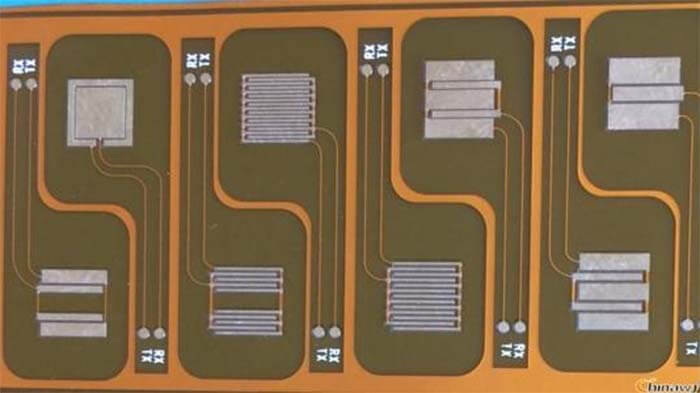This article describes the production process of FPC flexible circuit boards and methods how to improve the quality of the FPC board.
FPC flexible circuit boards have a very wide range of applications. Some circuits and electronics are used in automobiles. There are double-sided and single-sided flexible circuit boards. The production processes of single-sided and double-sided flexible circuit boards are different. The following is the corresponding production FPC manufacturing process.
Double-sided circuit board FPC manufacturing process
Cutting→ Drilling → PTH→ Plating → Pretreatment → Applying Dry Film → Aligning→ Exposure → Developing → Graphic Plating → Removing Film → Pretreatment → Applying Dry Film → Aligning Exposure → Developing → Etching → Release → Surface Treatment → Paste the cover film → Press → Curing→ Immersion of nickel gold → Printing characters → Cutting → Electrical test → Punching → Final inspection → Packaging → Shipment.
Single-sided circuit board FPC manufacturing process
Cutting → drilling → sticking dry film → alignment → exposure → developing → etching → stripping → surface treatment → covering film → pressing → curing → surface treatment → immersion of nickel and gold → printing characters → cutting → electrical measurement → punching Cutting → final inspection → packaging → shipping.
There is also a production process, which is rarely used in the industry at present because fine circuits cannot be done, and it is only suitable for single-panel manufacturing.
Engineering documents → film → making screen → copper foil → etching ink printing → UV drying → etching → removing film → solder mask printing → electroplating nickel gold → punching → inspection → shipment.
Almost all the FPC manufacturing processes so far have been processed by the subtractive method (etching method). Usually, a copper-clad board is used as a starting material, a resist layer is formed by photolithography, and the unnecessary part of the copper surface is etched and removed to form a circuit conductor. Due to problems such as undercutting, the etching method has limitations in the processing of fine circuits.
Based on the processing difficulties of the subtractive method or the difficulty in maintaining high-yield microcircuits, the semi-additive method is considered to be an effective method, and various semi-additive methods have been proposed. An example of micro-circuit processing using the semi-additive method. The semi-additive process starts with a polyimide film, and first casts (coats) a liquid polyimide resin on a suitable carrier to form a polyimide film.
Next, a sputtering method is used to form a seeding layer on the polyimide base film, and then a resist pattern of the reverse pattern of the circuit is formed on the seeding layer by photolithography, which is called a plating-resistant layer.
The blank part is electroplated to form a conductor circuit. Then remove the resist layer and unnecessary seeding layer to form the first layer of the circuit.
Coating photosensitive polyimide resin on the first layer circuit, forming holes, a protective layer or insulating layer for the second circuit layer by photolithography, and sputtering on it to form a seeding layer as the second layer The base conductive layer of the two-layer circuit.
By repeating the above process, a multilayer circuit can be formed.
Using this semi-additive method, ultra-fine circuits with a pitch of 5um and a via hole of 10um can be processed. The key to the production of ultra-fine circuits using the semi-additive method is the performance of the photosensitive polyimide resin used as the insulating layer.
FPC flexible circuit boards take higher quality as the premise to ensure better results. So, what methods are used by FPC manufacturers to improve the quality of flexible circuit boards?
1.Design and process in strict accordance with the corresponding product specifications.
A good design and production plan is an important prerequisites to ensure the production effect of FPC flexible circuit boards.
In order to ensure the use effect and quality requirements of the FPC board, it will strictly follow the production process to ensure that its cutting and drilling and other operating methods are processed in accordance with its standard mode, which fundamentally improves the quality of the FPC board.
2.Carry out FPC flexible circuit board product screening and use test.
To ensure the quality of the FPC board, it is necessary to pass a series of tests to select high-quality products.
It is required that every piece of FPC flexible circuit board and rigid-flex board coming down the production line must pass dozens of tests such as open and short circuit test, impedance test, solderability test, thermal shock test, metallographic micro section analysis, halogen-free test, etc. Any product must Only meet the customer’s quality requirements can be shipped.
High-quality FPC manufacturers will strictly follow the FPC board production process standards for production control during the production process. A strict quality screening system is an effective way to ensure the maximum quality of FPC products. Good R&D and design capabilities can ensure better production capacity and more reliable quality.
You may also be interested in the below articles.
Internal Antenna VS. External Antenna
LTE Vs. 5G: Is 5G Better Than LTE?




